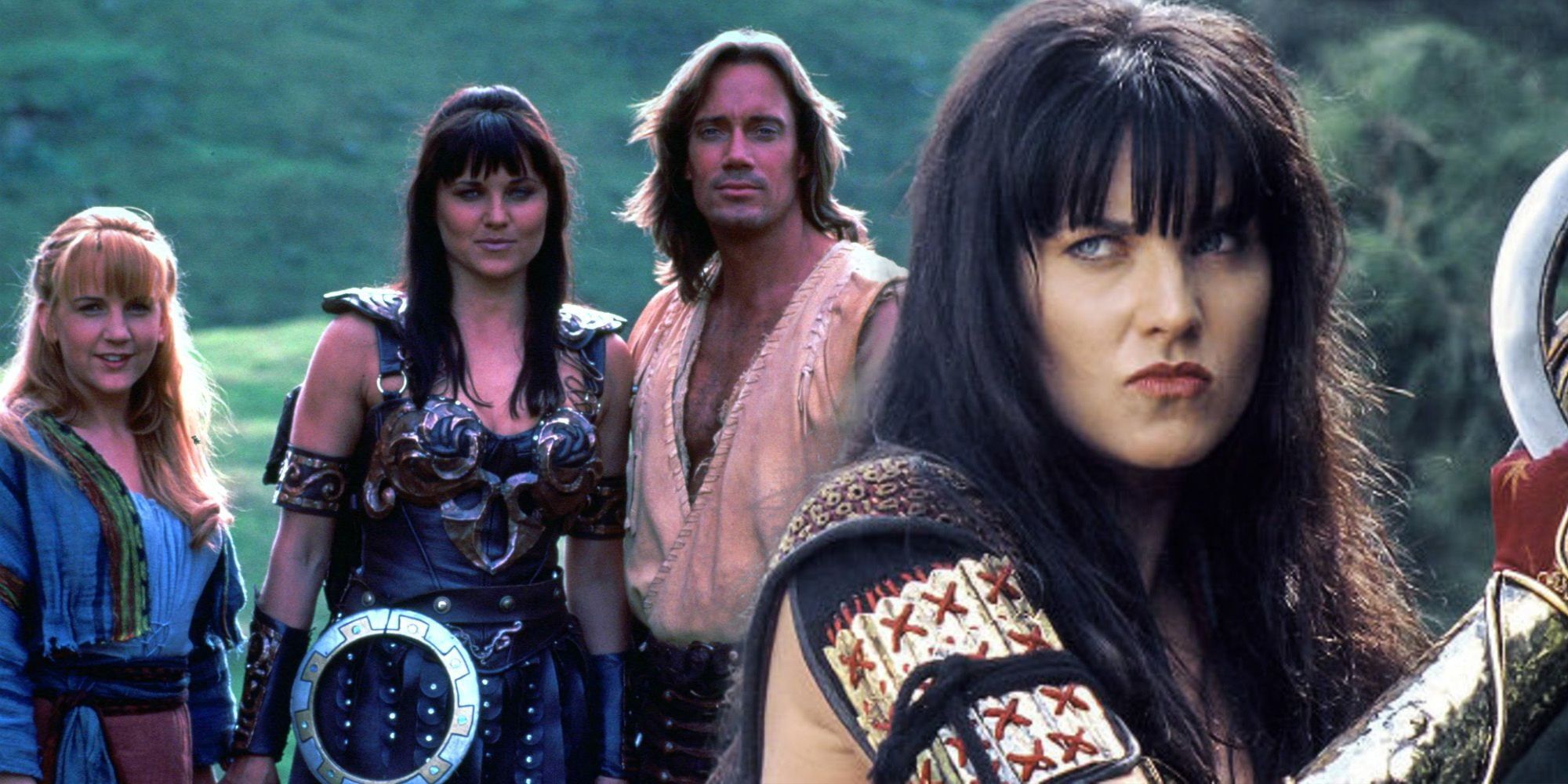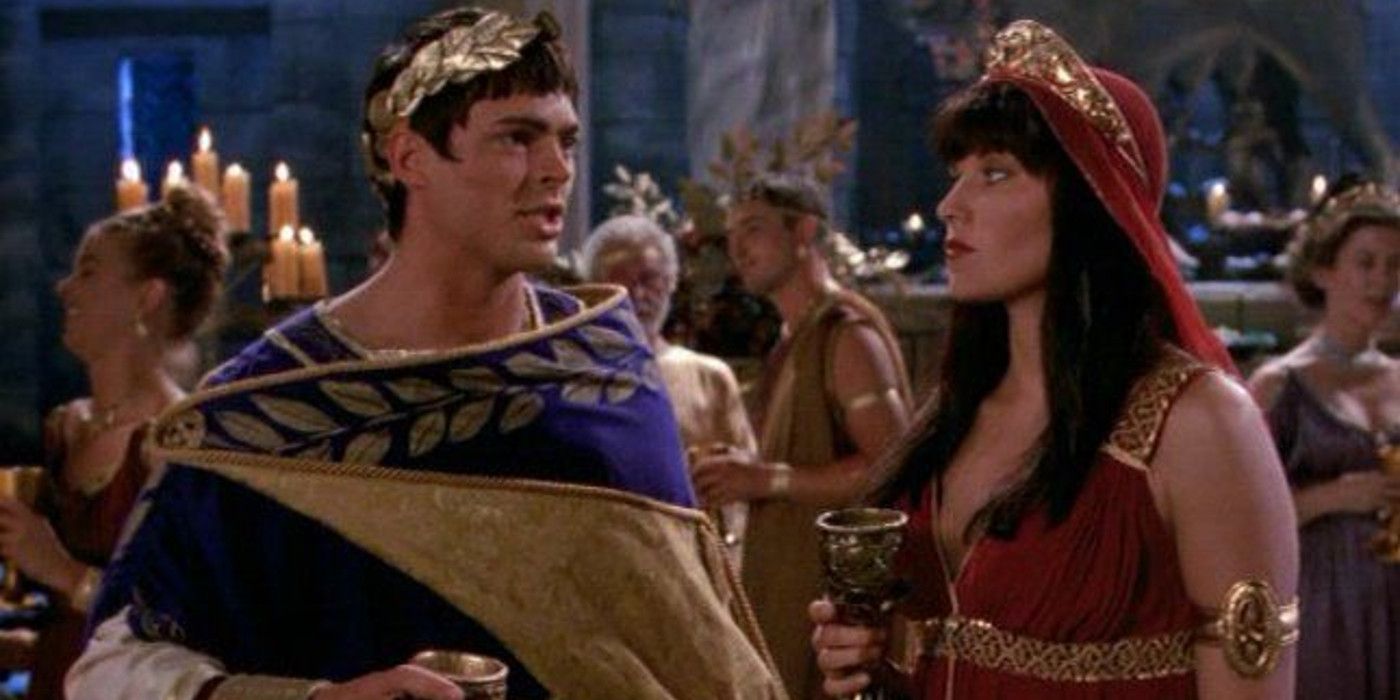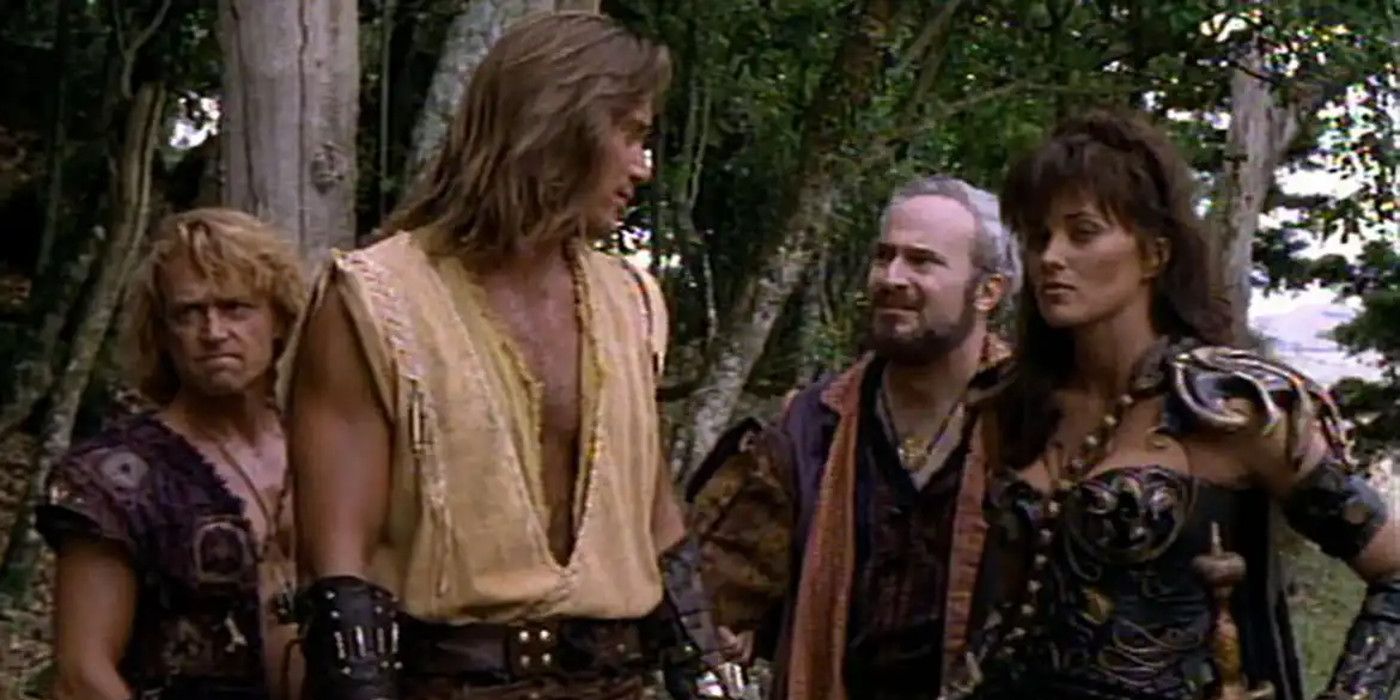
Looking back at the Hercules television series starring Kevin Sorbo, and its spin-off Xena: Warrior Princess, it is difficult to pin down just when the shows were set. This is due to the Xenaverse (as the show's setting is commonly known) drawing off a number of historical and mythological sources.
The mythos of ancient times continues to live on in a variety of new forms. Series like American Gods mix the deities of dozens of cultures to tell new stories in a modern setting. Video games like the God of War franchise do the same thing, allowing players to interact with the monsters and gods of old. Yet despite the variety of new tales that have been told over the past 25 years, Hercules and Xena have retained their following.
Because of that legacy, many still wonder how the two series managed to build their shared universe and just when exactly it was meant to take place. It doesn't help matters that the show was intentionally anachronistic in its costuming, with Hercules sporting a sleeveless shirt and trousers rather than a Grecian tunic and the love goddess Aphrodite favoring modern lingerie whenever she appeared. Here's a breakdown of how the Xenaverse came into being and just when the events of the shows were meant to take place.

The ancient legends of Hercules were first reworked with a more modern aesthetic in a series of five movies starring Sorbo and produced as part of Universal Studios' Action Pack; a syndicated programming block of science-fiction, fantasy, and action films and television series. The films presented Hercules as a bastard son of Zeus, blessed with incredible strength, who traveled around Greece slaying horrible monsters, fighting warlords, and helping people in need. His main adversary was Hera, queen of the Olympian gods, who was not thrilled to have a continual reminder of her husband's infidelity traipsing around earning praise for his noble deeds. He also regularly contested with his half-brother Ares, who, as the god of war, drew power from the conflicts that Hercules stopped.
The films were largely accurate to the classic myths, though some did use Hercules in place of another legendary Greek hero or combine various myths. Hercules in the Underworld, for instance, combined the legends of Orpheus and Hercules, by having Hercules travel to the afterlife and striking a bargain with Hades to recapture the three-headed dog Cerberus in exchange for being allowed to return to Earth with his wife, Deianeira. Another film, Hercules in the Maze of the Minitour, placed Hercules in the titular labyrinth, seeking to slay the Minotaur. The movies proved popular enough to inspire a regular syndicated series, Hercules: The Legendary Journeys, which opened with Hera killing Hercules' wife and children and Hercules resuming his life as a wandering hero.
Hercules: The Legendary Journeys ran for 6 seasons and 111 episodes, but it is best remembered today for the hero whose series spun out of it; Xena: Warrior Princess. Played by Lucy Lawless, Xena was introduced as a merciless warlord in "The Warrior Princess," the 9th episode of Hercules: The Legendary Journeys Season 1. Xena had plotted to kill Hercules so that no one could oppose her campaign to conquer Arcadia and she was meant to die after her third appearance, finding redemption in death after her men defied her order not to kill non-combatants. However, Lawless proved so popular with the production team and with fans that the producers came up with a new plan for Xena.

Premiering in the fall of 1995 alongside Hercules: The Legendary Journeys Season 2, Xena: Warrior Princess quickly eclipsed the show that inspired it. The new series centered on Xena as she traveled the world with aspiring bard Gabrielle, seeking redemption for her evil past. In expanding its setting and establishing Xena's history before encountering Hercules, Xena: Warrior Princess became equal parts historical epic and fantasy. This increased scope was part of the reason for Xena's longevity and part of why it remains a cult classic to this day.
Xena was established as having a long rivalry with Julius Caesar (played by a young Karl Urban) and Caesar was one of the series' main antagonists until his death in the Season 4 finale, "The Ides of March." This established a rough chronology for when both series took place, with Caesar having been assassinated in 44 BC. It should be noted, however, that neither show was ever concerned with historical accuracy, even after they began utilizing notable historical figures. For instance, one episode of Xena: Warrior Princess Season 6 pitted Xena and Gabrielle against a divinely empowered Caligula, who was depicted as the Emperor of Rome some 25 years after Julius Caesar's death. In our reality, Caligula did not become Emperor until 37 AD. The show also made references to the Lao Dynasty and Ming Dynasty of China, which would not come to exist until many centuries after the fall of Rome.

Beyond utilizing real-world historical figures, Xena: Warrior Princess also began to utilize mythology from outside the era of Classical Greece. Hercules: The Legendary Journeys followed suit, with both series going on to tackle Norse mythology, bringing characters like Odin and Thor into play. In the episode "Norse by Norsewest," Hercules took the place of the god Höðr in being manipulated by Loki into accidentally killing Balder with a dart made of mistletoe and setting up the start of Ragnarok. Xena: Warrior Princess reworked Xena into the Ring Cycle, making Xena into both a contemporary of the valkyrie Brunhilda and the Dane hero Beowulf. Xena was also revealed to have had traveled to Asia and received training as a samurai, albeit in armor that was not historically accurate and protected very little.

The timelines of Hercules and Xena: Warrior Princess line up quite well, with both series having shared supporting casts and crossed-over frequently. Ironically, the show had more problems in keeping its characters consistent between shows than in keeping its timeline cohesive. To give one example, the god Odin was portrayed as a devout family man in Hercules: The Legendary Journeys, being loyal to his wife, Frigga, loving towards his children, and deeply concerned about the fate of humanity. By contrast, the Odin of Xena: Warrior Princess, was a jealous warrior king, who indulged himself with his Valkyries and cared little for the problems of Man. While a case can be made for both portrayals based on the classic Norse myths, neither show attempted to reconcile the two takes. Given that, and the aforementioned problems with nailing down when the shows took place outside of Caesar's death, it is best to think of the stories of Hercules and Xena as ripping yarns told around the fire, enjoyed as individual stories independent of one another.
source https://screenrant.com/xena-hercules-timeline-explained/

0 comments: